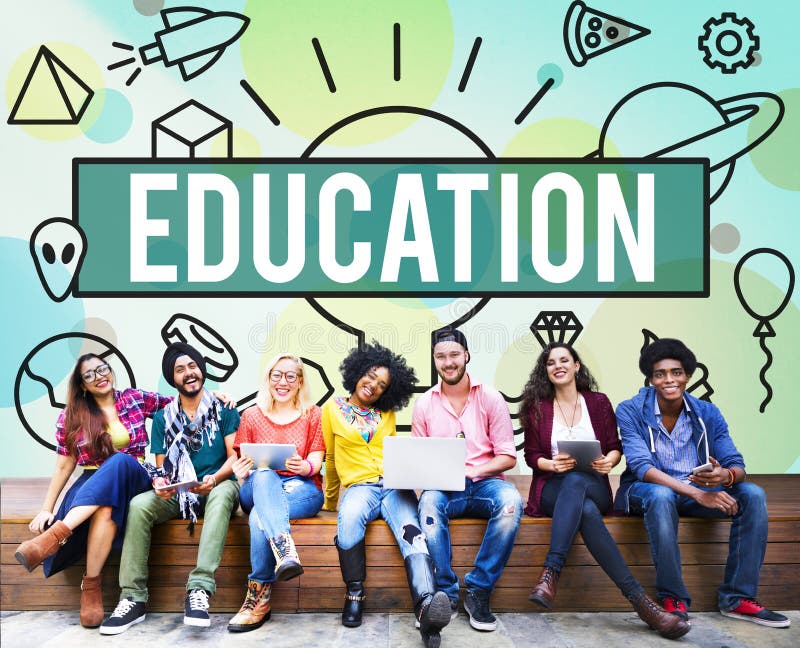The Duty of Education And Learning in Structure a Comprehensive Educational Site for All
The role of education and learning in establishing a detailed instructional site for all is progressively recognized as important in today's varied culture. This query welcomes more exploration right into the dynamics of educational equity and efficiency.
Relevance of Inclusivity

When academic websites prioritize inclusivity, they develop a culture of belonging where every pupil really feels valued and equipped. This setting encourages energetic engagement, collaboration, and mutual respect among learners, helping with more powerful social relationships. Moreover, inclusive techniques add to improved scholastic outcomes, as students are more probable to involve with the educational program when they see their identities shown and appreciated.
In addition, inclusivity prepares students for a diverse labor force and culture, outfitting them with the abilities required to browse and add positively to diverse settings. By embracing inclusivity, instructional websites not just meet their honest obligations but also improve the educational landscape, inevitably benefiting trainees, educators, and the neighborhood at large. Consequently, cultivating inclusivity is crucial for the improvement of effective and fair education.
Leveraging Modern Technology for Discovering
Incorporating technology right into instructional sites enhances inclusivity by giving diverse discovering tools and resources customized to individual demands. Digital platforms permit the combination of multimedia resources, such as video clips, interactive simulations, and gamified discovering experiences, which deal with differing learning styles. This access ensures that students can involve with content in methods that resonate with them, promoting a deeper understanding of topic.
Moreover, modern technology helps with real-time responses and personalized discovering pathways. With flexible knowing modern technologies, instructional sites can examine private performance information, enabling customized content shipment that fulfills each student's pace and proficiency level. This approach not just improves involvement however likewise equips pupils to take ownership of their understanding trip.

Ingenious Teaching Methods

One popular technique is project-based knowing (PBL), which encourages students to take part in hands-on tasks that resolve intricate inquiries or challenges. This method fosters collaboration, creativity, and analytic abilities, all of which are important in today's workforce. Flipped classrooms have actually gained traction, where traditional understanding is reversed; students assess lecture materials at home and involve in interactive activities throughout class time, promoting much deeper understanding and retention.
Another substantial trend is the combination of gamification into education and learning. By incorporating video game elements right into lessons, educators encourage learners and boost participation via competition and rewards. Furthermore, set apart instruction dressmakers finding out experiences to satisfy the diverse needs of pupils, enabling individualized learning courses that adjust to varying rate of interests and capacities.
Collaboration and Neighborhood Structure
Often, cooperation and community building are identified as important elements of efficient education, cultivating a comprehensive and helpful learning environment. These aspects a knockout post develop a structure where students, teachers, and area participants can engage in meaningful interactions, boosting the instructional experience for all participants.
Partnership motivates the sharing of concepts, sources, and proficiency, helping with a richer discovering procedure. This vibrant aids to damage down silos within the educational ecosystem, promoting interdisciplinary methods that can attend to complicated problems. By interacting, teachers can establish cutting-edge educational programs that mirror varied perspectives while fulfilling the different needs of pupils.
Neighborhood structure goes together with collaboration, as it grows a sense of belonging amongst all stakeholders. When individuals feel connected to their educational community, they are more likely to spend time and resources into collective objectives. This shared dedication can lead to boosted motivation, enhanced academic outcomes, and higher retention prices.
Moreover, promoting collaboration and neighborhood structure can likewise prolong beyond the classroom, entailing moms and dads, regional organizations, and businesses. These partnerships can provide support and resources that boost educational opportunities, eventually adding to an extra extensive instructional site for all.
Measuring Success and Influence
The efficiency of cooperation and community structure in academic setups can be examined through numerous metrics that determine success and influence. These metrics may consist of pupil interaction levels, academic performance, retention rates, and community feedback. By using quantitative information such as test ratings and graduation rates, educational stakeholders can determine the general effectiveness of joint initiatives.
Additionally, qualitative evaluations, such as surveys and focus teams, offer beneficial insights into participant satisfaction and perceived benefits of community-building tasks. Consistently tracking these metrics enables educators to recognize locations of strength and those requiring improvement, guaranteeing that joint initiatives continue to be impactful and concentrated.
Furthermore, longitudinal research studies can aid measure the long-lasting results of instructional partnerships on trainee end results and community growth. These evaluations can disclose trends gradually, highlighting how sustained partnership cultivates an environment for discovering and advancement.
Ultimately, specifying success in academic settings calls for a complex site strategy, integrating both qualitative and measurable information. By continually reviewing the impact of collaboration and community-building initiatives, academic Home Page sites can fine-tune their methods, guaranteeing they satisfy the varied demands of all stakeholders included.
Verdict
Finally, education and learning acts as a cornerstone in developing a comprehensive instructional site that focuses on inclusivity for all learners. By incorporating ingenious training techniques, leveraging technology, and promoting cooperation within neighborhoods, a helpful and appealing learning environment is developed. These components not just improve customized knowing experiences but also grow a society of belonging. Eventually, the commitment to inclusivity and equity prepares trainees for success in a diverse and interconnected world, enhancing the transformative power of education - School Drillers Education Insight.
The value of inclusivity in academic websites can not be overstated, as it plays a crucial duty in promoting a knowing setting that fits diverse backgrounds and capabilities. Inclusivity makes certain that all trainees, regardless of their socio-economic standing, ethnic culture, sex, or learning abilities, have equitable accessibility to educational sources and opportunities.When instructional websites prioritize inclusivity, they develop a culture of belonging where every pupil feels valued and encouraged. By embracing inclusivity, instructional websites not just meet their moral commitments yet also enhance the academic landscape, eventually profiting trainees, teachers, and the neighborhood at huge.The efficiency of cooperation and neighborhood structure in academic settings can be assessed through numerous metrics that gauge success and influence.